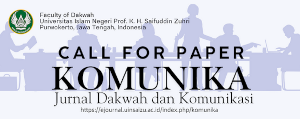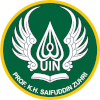AI-Generated Content Policy
We recognize the significant potential of Artificial Intelligence (AI) in supporting research and scholarly writing. We are also concerned about the injudicious use of AI, which can undermine the credibility and ethics of scientific publications. This policy provides clear guidance on the use of AI-generated content in the preparation of scientific articles.
Core Principles
Academic integrity is our top priority. The use of AI in scientific writing must always be based on the principles of transparency, accountability, and originality. Authors bear full responsibility for all submitted content, regardless of whether it was partially or entirely generated by AI.
Permitted vs. Prohibited AI Use
We distinguish between AI use that serves as an aid and use that replaces the fundamental role of the author:
1. Permitted AI Use (As an Aid)
AI can be utilized as a tool to enhance the efficiency and quality of writing, provided the author maintains full control and responsibility for the final output. Examples of permitted uses include:
- Grammar and spell checking: AI can help identify and correct grammatical errors, spelling mistakes, and writing style issues to improve article readability.
- Paraphrasing and sentence restructuring: AI can be used to rephrase text or restructure sentences for clarity and conciseness, but not to avoid plagiarism. Authors must ensure the original meaning is preserved and there are no copyright infringements.
- Title and abstract suggestions: AI can provide ideas or suggestions for engaging and relevant titles and abstracts, but the finalization remains the author's responsibility.
- Data analysis and visualization: AI can be used in complex data analysis processes and the creation of data visualizations, but the interpretation and discussion of results must be entirely done by the author.
- Translation: For non-native English-speaking authors, AI can assist in the initial draft translation process, with the author ensuring accuracy and context.
2. Prohibited AI Use (Integrity Violation)
AI use that replaces the substantive role of the author or has the potential to mislead readers is strictly prohibited. This includes:
- Generating an entire manuscript or significant portions of it: Articles or their main parts substantially generated by AI without original intellectual contribution from the author are considered a breach of academic integrity.
- Automated writing of "methodology," "results," and "discussion" sections: These sections require a deep understanding of the research and data interpretation that only the researcher can provide.
- Creating false references or citations: AI must not be used to create non-existent reference lists or falsify citations.
- Disguised plagiarism: Using AI to extensively rephrase someone else's work without proper attribution, with the intent of avoiding plagiarism detection, is strictly forbidden.
Percentage of AI-Generated Content
Referring to international publisher guidelines, there is no specific permissible percentage for the use of AI-generated content in scientific articles. The primary focus is on quality, originality, and author accountability.
- We do not permit articles where a substantial portion of the content (exceeding 20% of the total text) is generated by AI without significant author intervention. This figure is not a rigid limit but an indication that the author should be the primary contributor and controller of the article's substance.
- If AI is used, authors must disclose its use in the methodology or acknowledgments section. This disclosure should explain how AI was used (e.g., for grammar checking, paraphrasing, etc.) and the version of the AI software employed.
Author Responsibilities
Authors are fully responsible for:
- Ensuring the accuracy, originality, and truthfulness of all information presented in the article.
- Conducting a thorough verification of any AI-generated content to ensure there are no factual errors, biases, or misleading information.
- Ensuring that the use of AI does not violate copyright or lead to plagiarism.
- Transparently disclosing the use of AI tools in the writing process.
- Guaranteeing that all conclusions and interpretations in the article are the result of the author's critical thinking and analysis.
This policy will continue to be reviewed and updated in line with AI technological advancements and best practices in scholarly publishing. Let's work together to maintain the integrity and quality of our scientific journal.
























